Booking a yoga retreat in Tanzania felt like the perfect way to stretch both my legs and my horizons. Since it was such a long journey, I decided to make the most of it by visiting a neighboring country I’d never been to: Kenya. Once I started reading about Mount Kenya hiking—the country’s highest peak and the second-highest in Africa, far less crowded than Kilimanjaro—I knew I wanted to give it a try.
After some research, I connected with Go To Mount Kenya and arranged a five-day trek on the Chogoria–Sirimon Route to Point Lenana, the mountain’s third-highest summit. At first, I was thinking of doing it solo, which made me a little nervous, but soon my friends Louie and Leslie decided to join in.
I flew into Nairobi the day before, with just enough time to have dinner, relax, and prepare for the trek ahead. The next morning, we’d begin our Mount Kenya adventure.
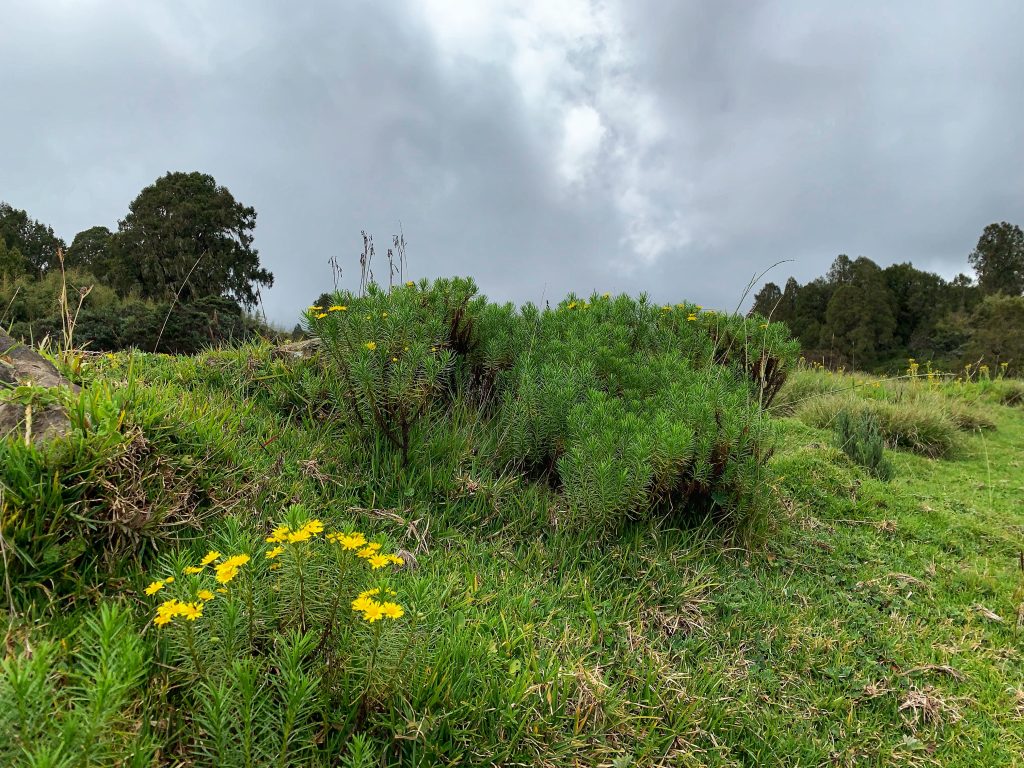
The following morning, our Go To Mount Kenya representative picked us up from our hotel in Nairobi. We left the city behind and began the roughly five-hour drive toward Chogoria, a town on the eastern side of Mount Kenya known for its forests, cliffs, and as the gateway to the mountain. This was the start of the Chogoria–Sirimon route we’d chosen for our five-day, four-night trek.
In Chogoria town, we met our team — led by our guide, Paul, along with a chef and five porters. They’d be carrying most of our gear during the trek, while we kept only our daypacks. It was also the point where we switched vehicles for the rough road ahead.
After a quick lunch, we piled into a 4WD Land Rover for the last twisting, bouncing stretch — the kind of ride where you hang on, hope for the best, and laugh a lot. As we climbed higher, the vegetation grew denser, with thick green growth pressing close to the track, broken now and then by farms and small clusters of houses.
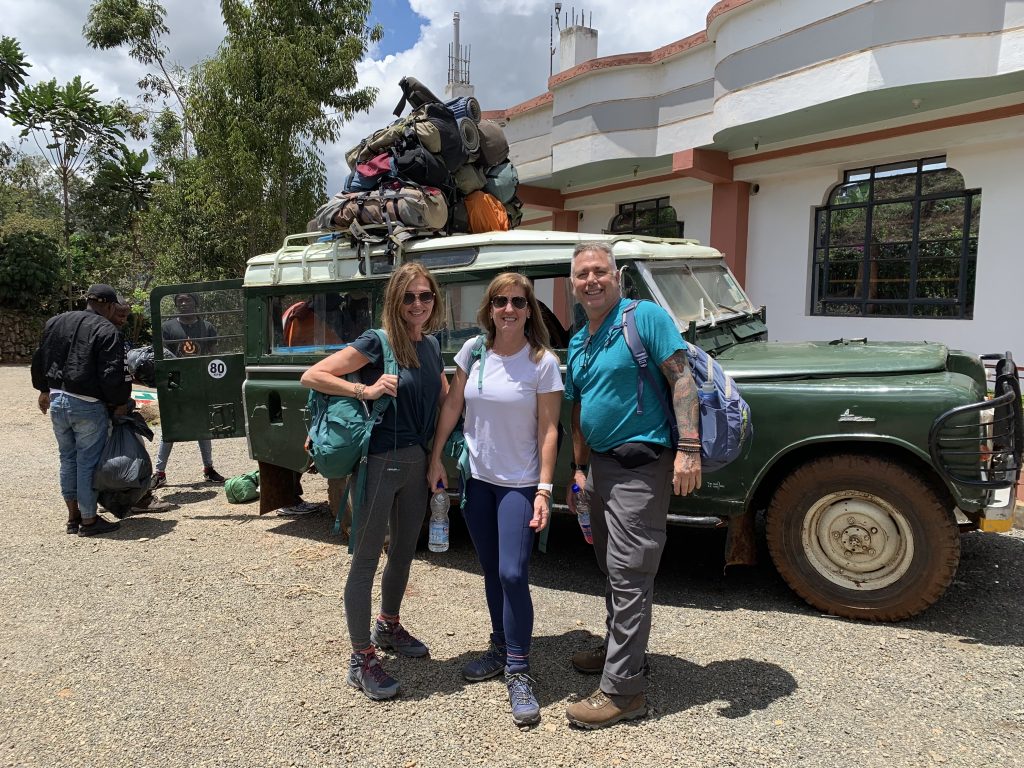
At the Chogoria Gate, Paul checked us in and handled the paperwork. From there, we grabbed our daypacks and walked the final stretch — about 30–40 minutes through the forest — to the Meru Mount Kenya Bandas.
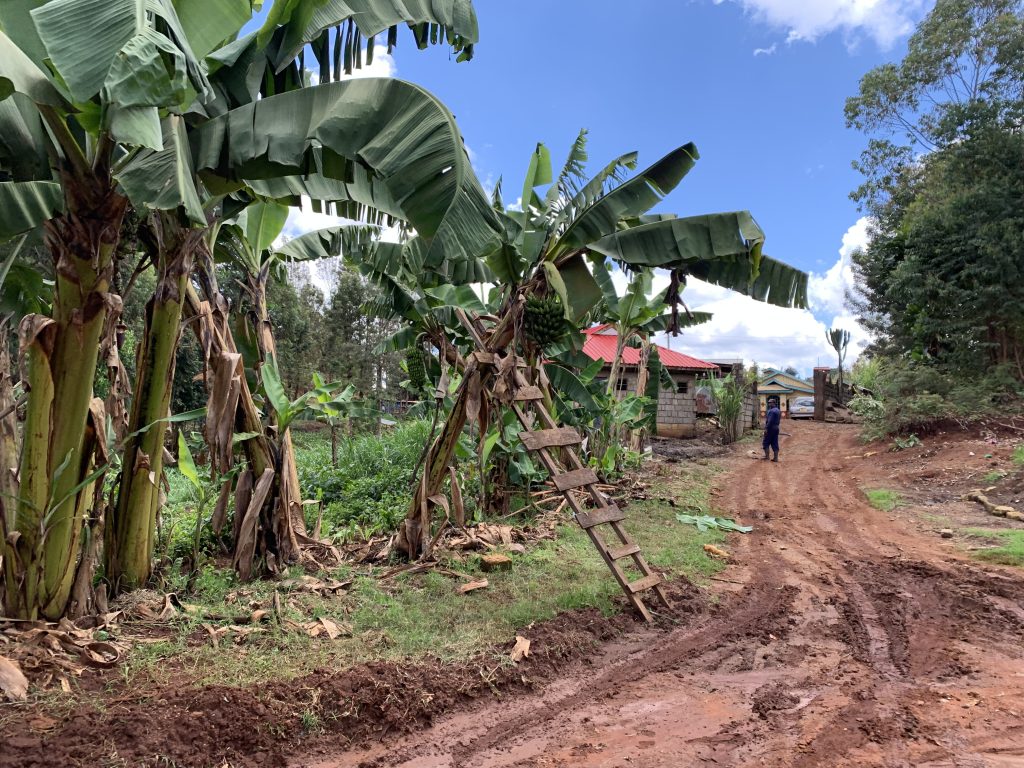
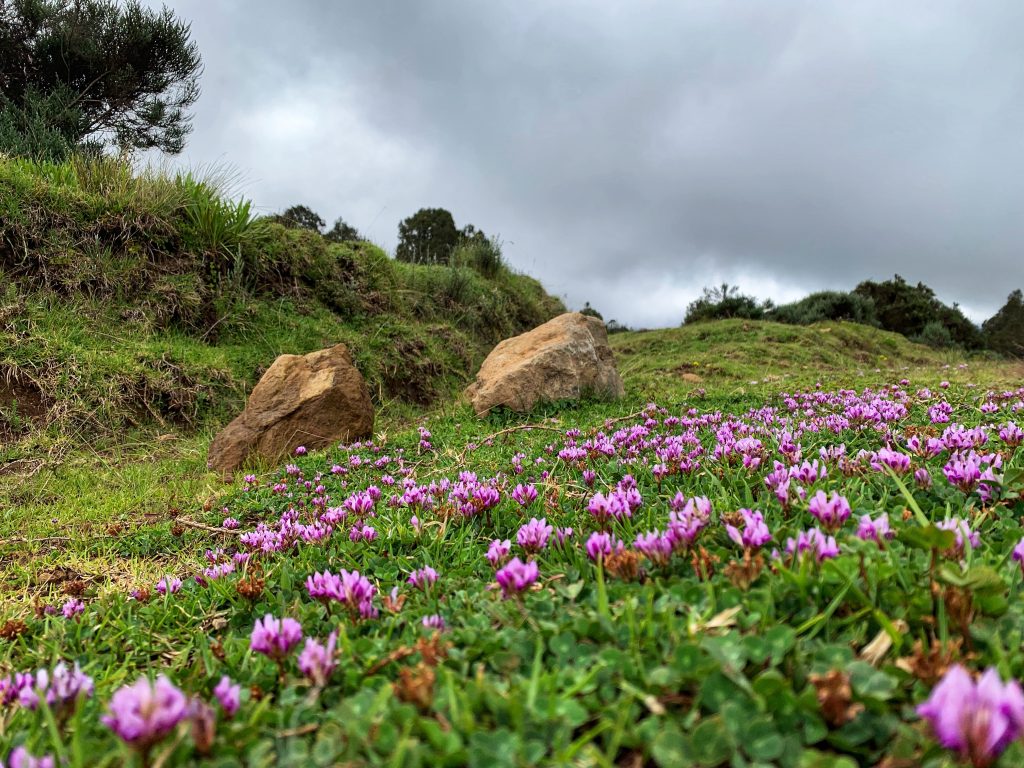
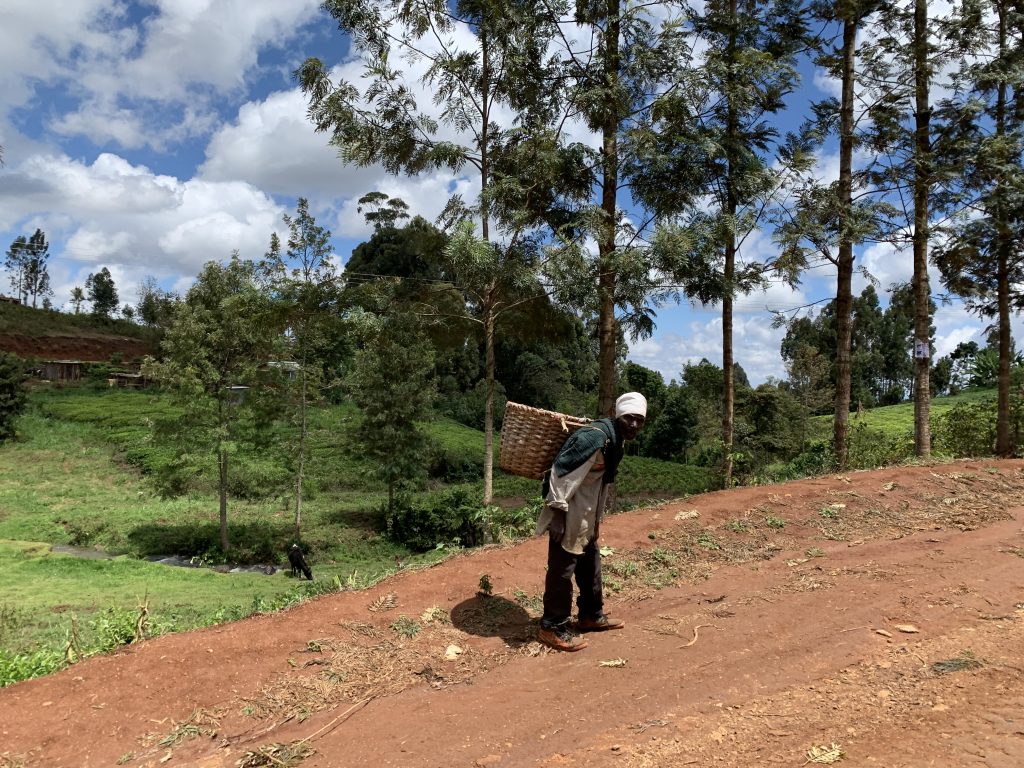
Just before reaching the cabins, the sky opened up and the rain poured down, soaking us completely. Luckily, we were only a few minutes away from shelter. The little wooden cabins were simple but dry — and that was all that mattered.
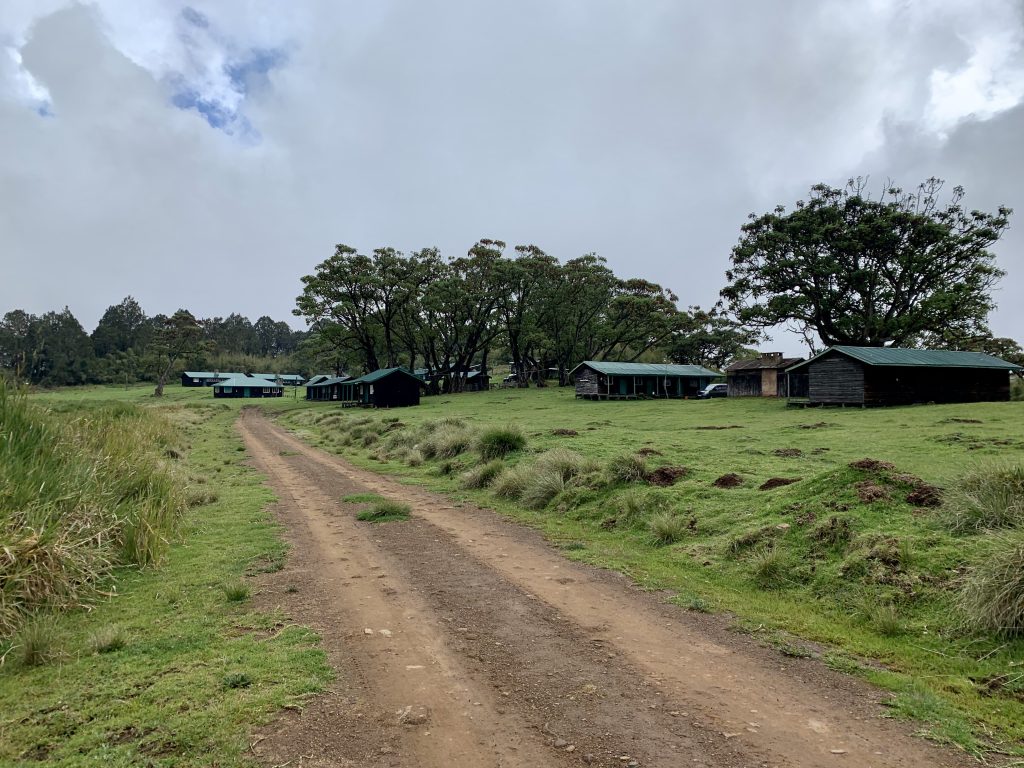
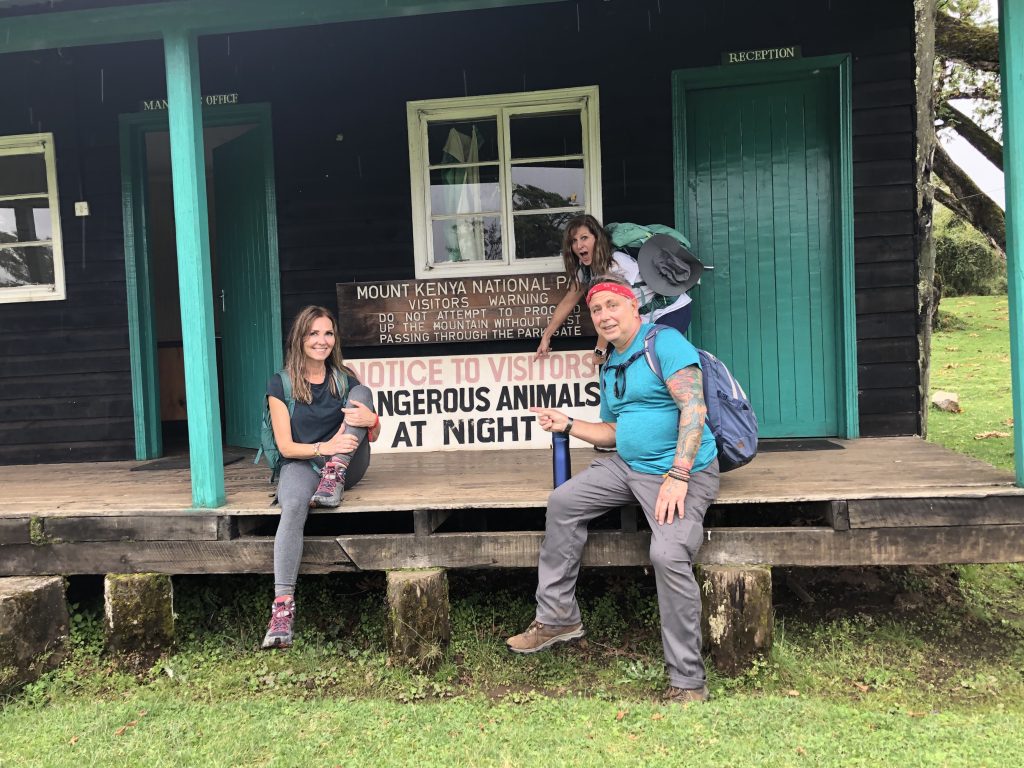
Our room was basic: wood floors, three single beds with thin blue blankets, and showers and flush toilets that barely worked. The showers only offered a trickle of cold water, and since I wouldn’t have access to one for the next three nights anyway, I figured one more day wouldn’t make much difference. I skipped it.
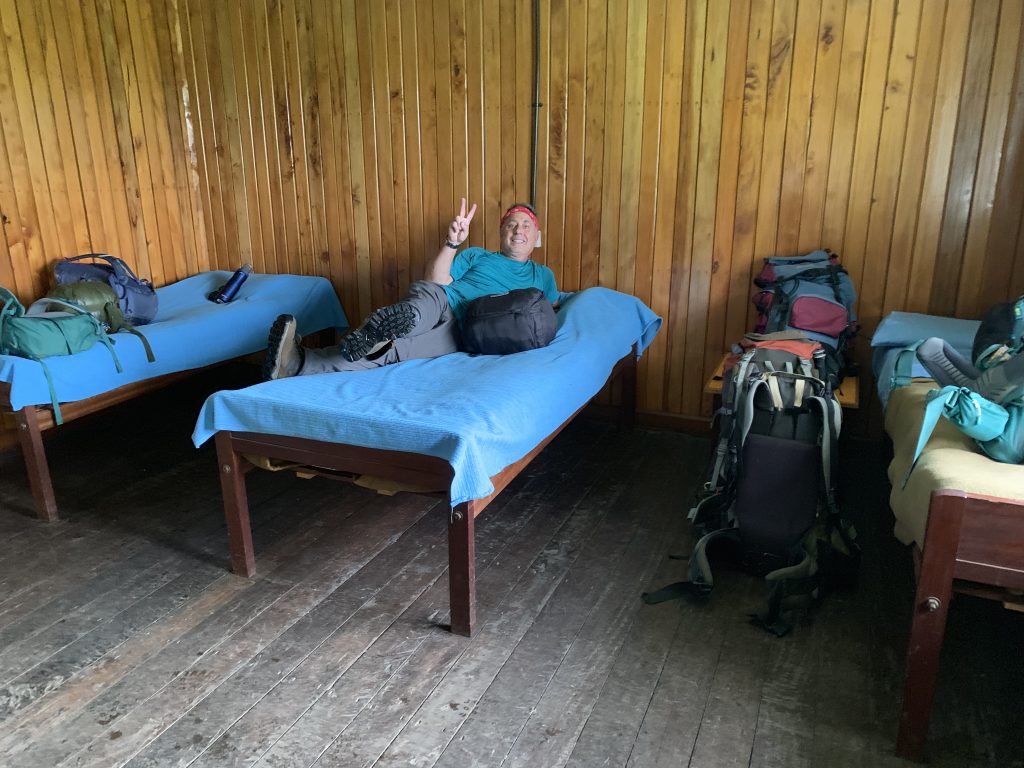
Aside from the bedroom, the cabin had a kitchen where our chef and porters worked their magic, as well as a small sitting area with a few chairs and a fireplace. Paul tried to get a fire going, but it only smoldered, so I kept my jacket on.
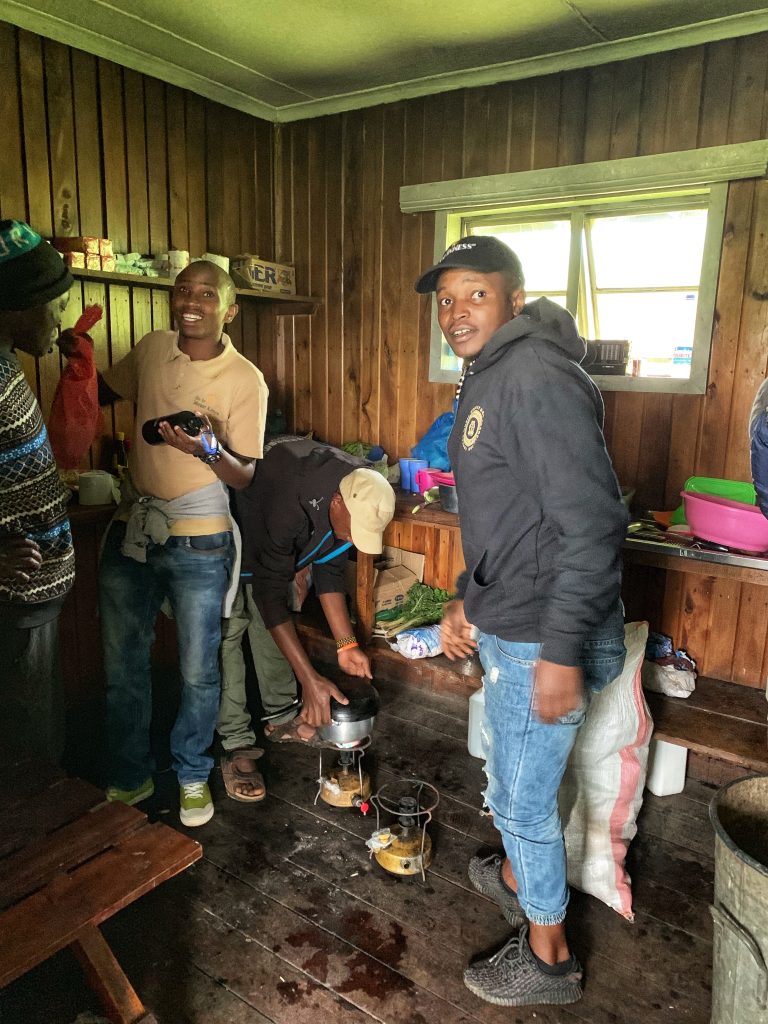
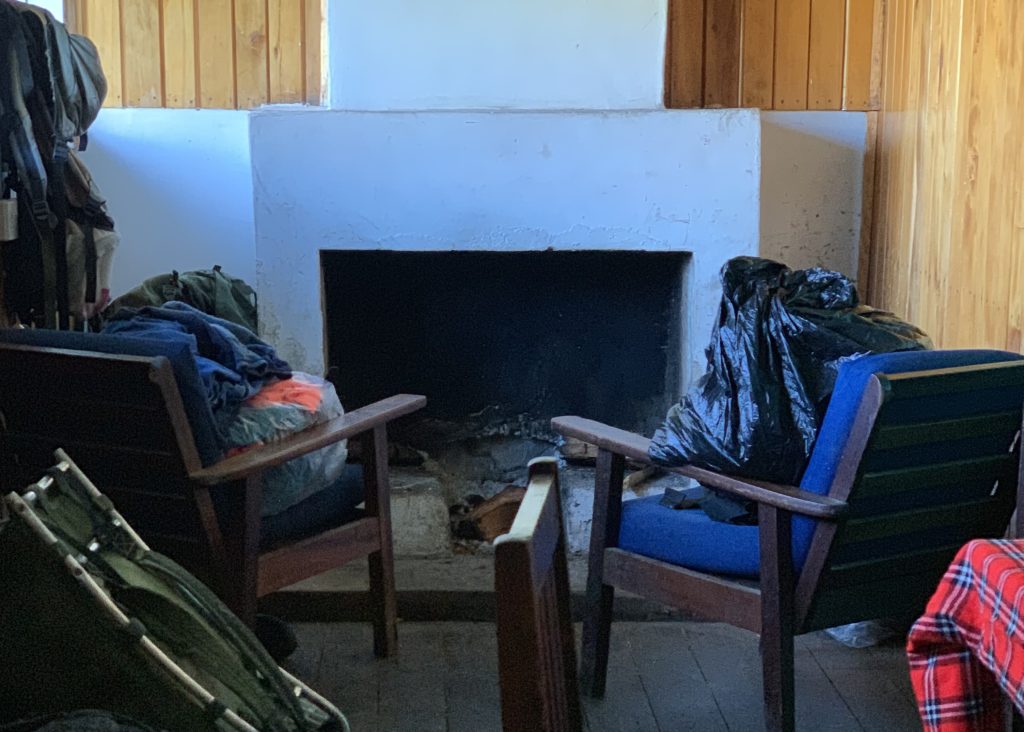
As the evening rolled in, the temperature dropped quickly and the cabin grew chilly. It was a clear hint of what lay ahead, especially knowing we’d be in tents for the rest of the trip.
After a hearty breakfast at the bandas, we grabbed our jackets and backpacks and set out on Day 2 of our Mount Kenya trek. It was a 9-kilometer hike to Nithi Camp, starting in damp, shaded forest before opening into heather and moorland. At some point along the way, we stopped by a stream for lunch, then kept climbing.
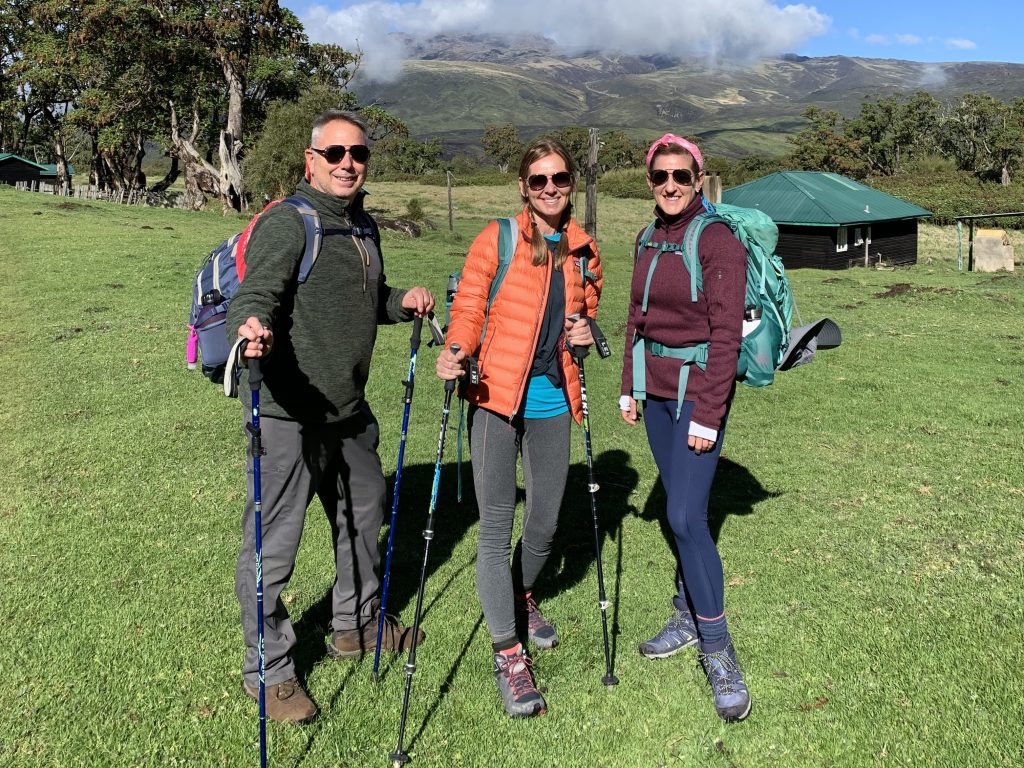
Paul kept us at an easy pace with his steady reminders — poley poley (slowly, slowly) and maje maje (drink water). The hike wasn’t punishing, but it was steady, with about 600 meters of elevation gain.
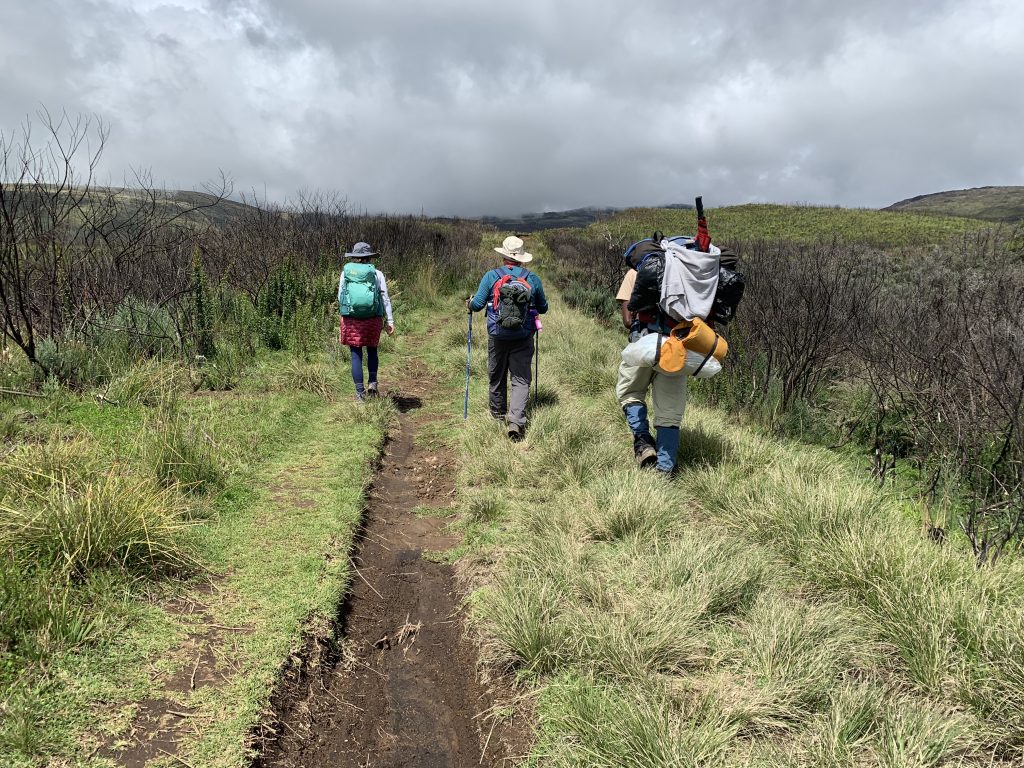
By early afternoon we reached Nithi Camp at around 3,600 meters, where the porters were already setting up for our first night in tents. After dropping our bags, Paul led us on a short hike to Nithi Falls — a beautiful waterfall spilling into the valley, surrounded by wildflowers.
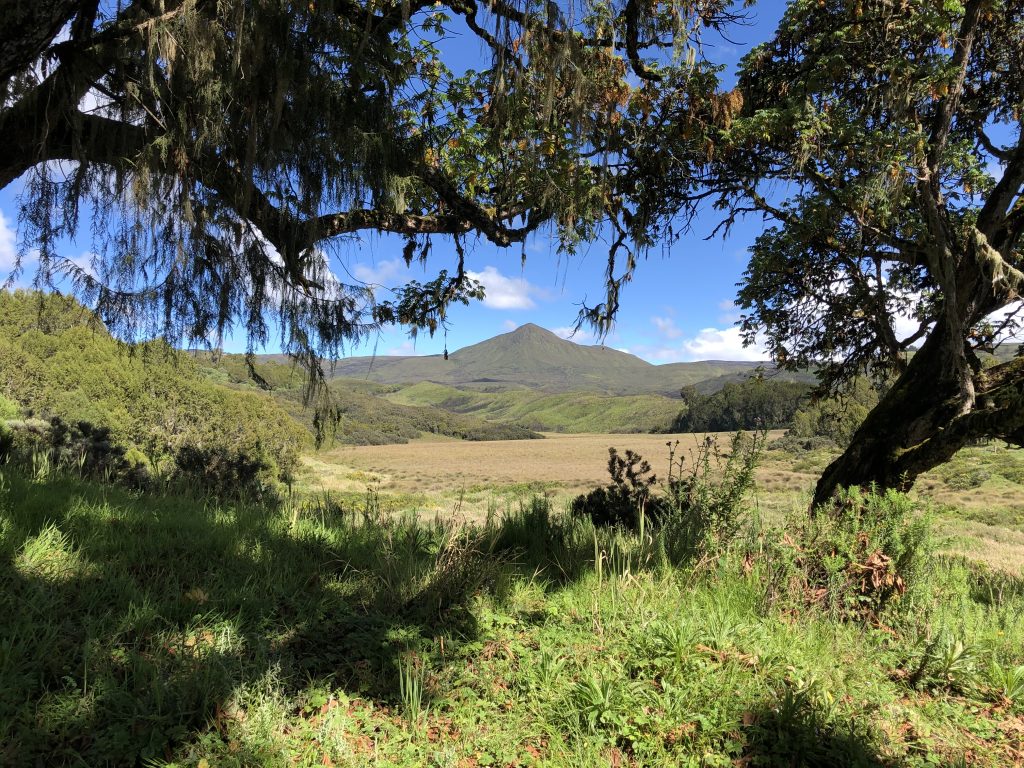
That evening gave me my first real taste of camp life. Before dinner one of the porters brought around a basin of warm water and a cloth so we could wash our hands and face — a small gesture that felt surprisingly comforting.
Facilities, though, were as basic as it gets: an outhouse with a long drop, just a square hole in the wooden floor. It creeped me out, and I couldn’t bring myself to use it. Instead, I picked a spot out in nature, which honestly felt cleaner and easier.
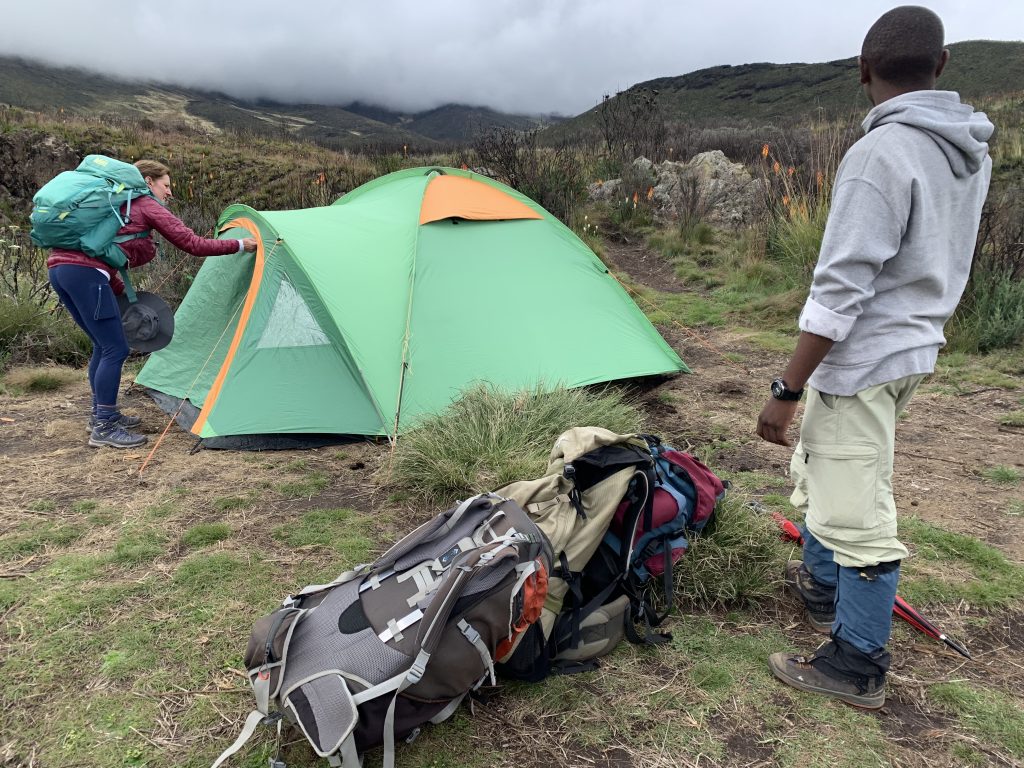
Dinner was hot and plentiful, served at a simple outdoor table. Later, when the sun dropped and the sky turned black, I stepped outside to a view of stars brighter than anything at home.
Crawling into my tent that night, I unrolled my sleeping bag on top of the little air mattress I’d packed and realized it had only been two days — already tough, already beautiful — and I was just glad to be out there doing it.
We left Nithi Camp after breakfast and set out on the steady hike toward Mintos, climbing another 600 meters to reach 4,200. The trail was a mix of soft boggy patches and rough volcanic rock. The air was cooler and thinner now, enough to notice the difference from the day before.
Strange-looking giant groundsels dotted the moorland — shaggy, Dr. Seuss–like plants that somehow thrive in the alpine zone — while tufts of grass and scattered volcanic rock covered the ground. Every so often the clouds shifted, and we caught glimpses of Gorges Valley and, far below, the dark waters of Lake Michaelson.
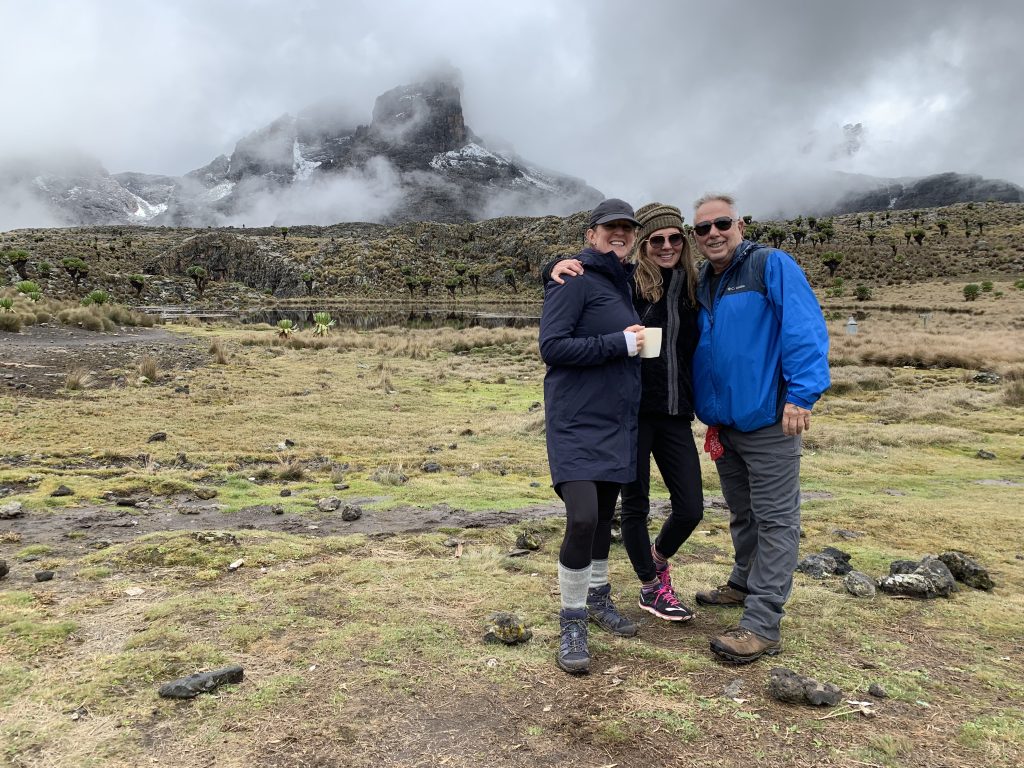
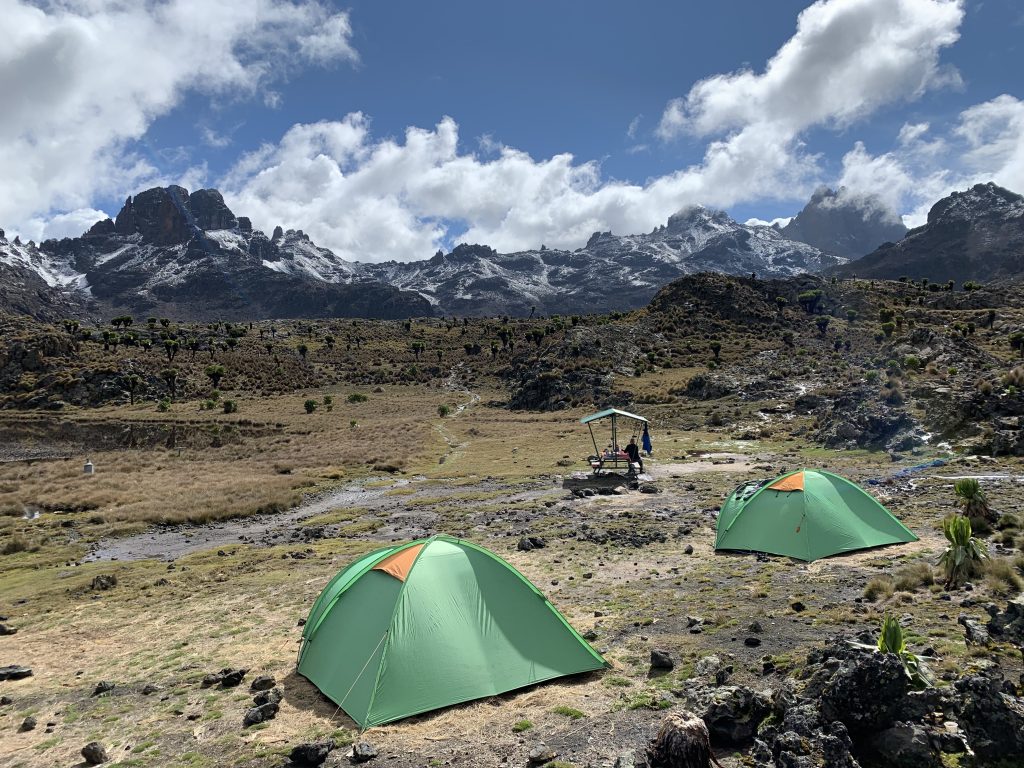
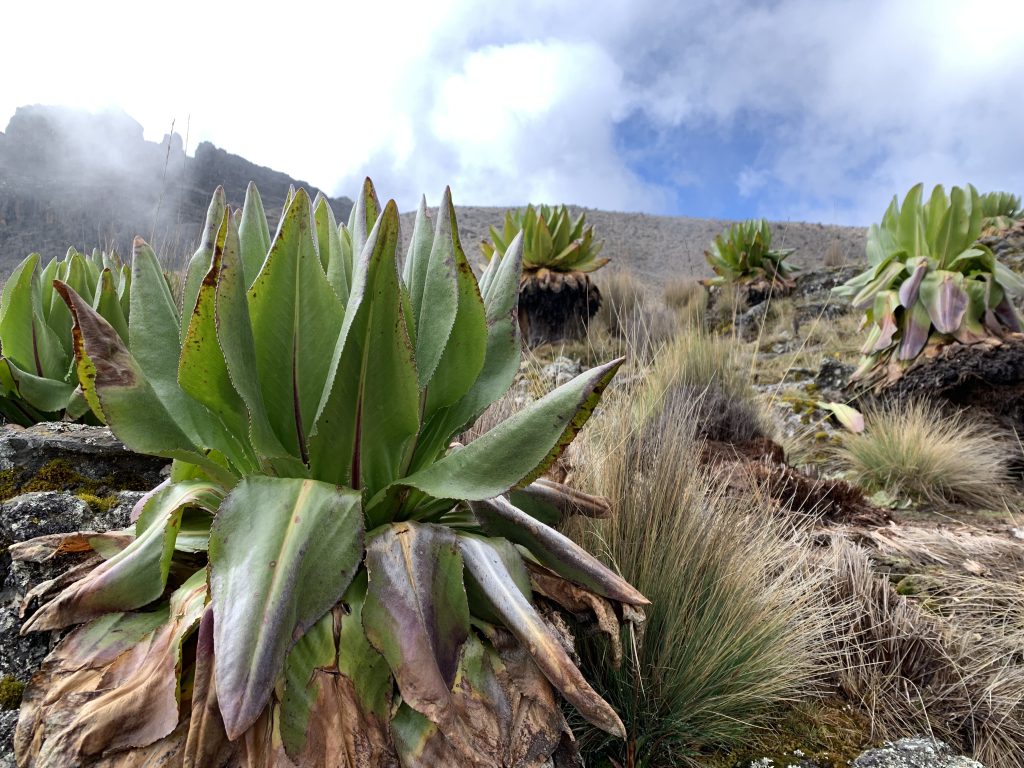
We reached camp by early afternoon, with plenty of time to take it easy. Our tents were pitched beside Mintos Tarn, a small alpine lake reflecting the peaks and drifting clouds. From camp we could see Point Lenana, the summit we’d be climbing the next morning.
Clouds wrapped around the top, hiding and revealing it in turns. I hadn’t really been nervous about summit day until then, but standing there looking up at the mountain, I felt nervous and excited all at once.
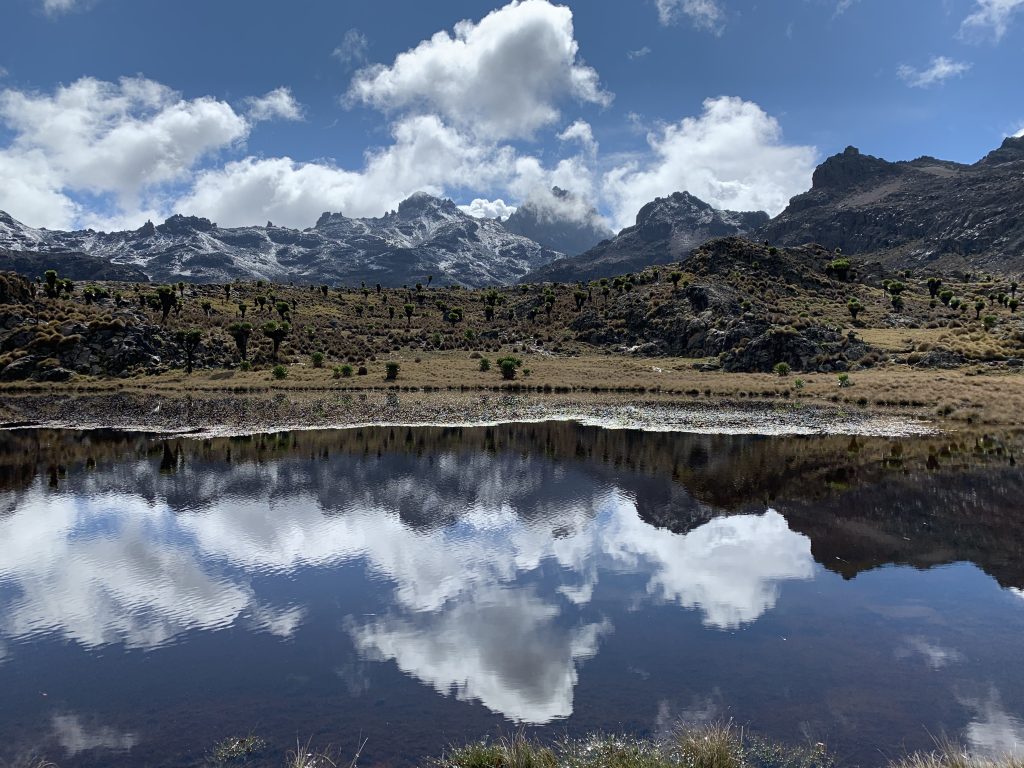
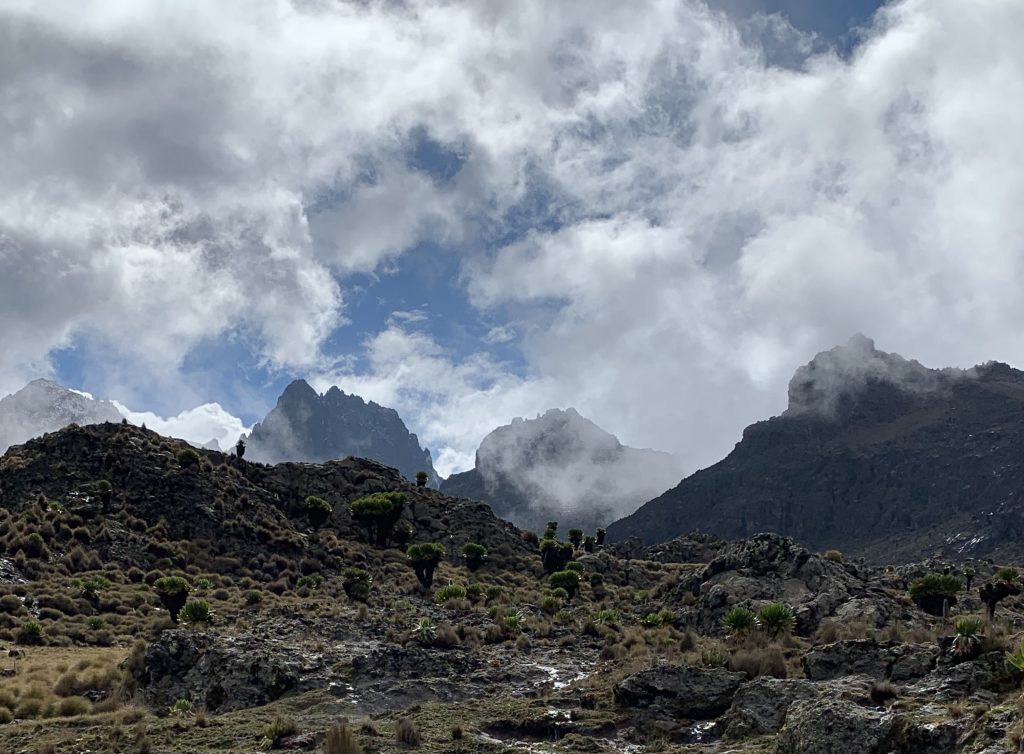
The rest of the afternoon was quiet. We had an early dinner, laid out our gear, and crawled into our tents long before dark. Tomorrow was summit day.
Sometime in the night, the snow came down so heavily that Louie’s tent collapsed — so he dragged his sleeping bag into Leslie’s and my tent, already a squeeze. When one of the porters woke us at 4 AM with hot tea, it was still snowing. The cold bit straight through me, and I hesitated to crawl out of my sleeping bag. I finally managed, though I refused to eat at the outside picnic table and had my breakfast tucked inside the tent.
Paul came by to remind us to dress in layers for the cold. I piled on everything I had: a thermal base, another shirt, my jacket, and my rain shell on top.
The climb from Mintos Campsite toward Point Lenana was grueling — rocky, snowy, and slick underfoot. At times, the trail cut through riverbeds, and I kept worrying my feet would get soaked, but thankfully, my boots did their job. Other stretches meant scrambling over loose scree and boulders, each step demanding full attention.
As we climbed higher, my hands became the real problem. My gloves had been wet for hours, and no matter how much I flexed my fingers, I could barely feel them. Leslie loaned me her mittens with hand warmers for part of the climb, and for a while it gave me a little relief. But when we reached the point where we had to decide — summit or descend — she was going on. That meant, of course, giving her mittens back.
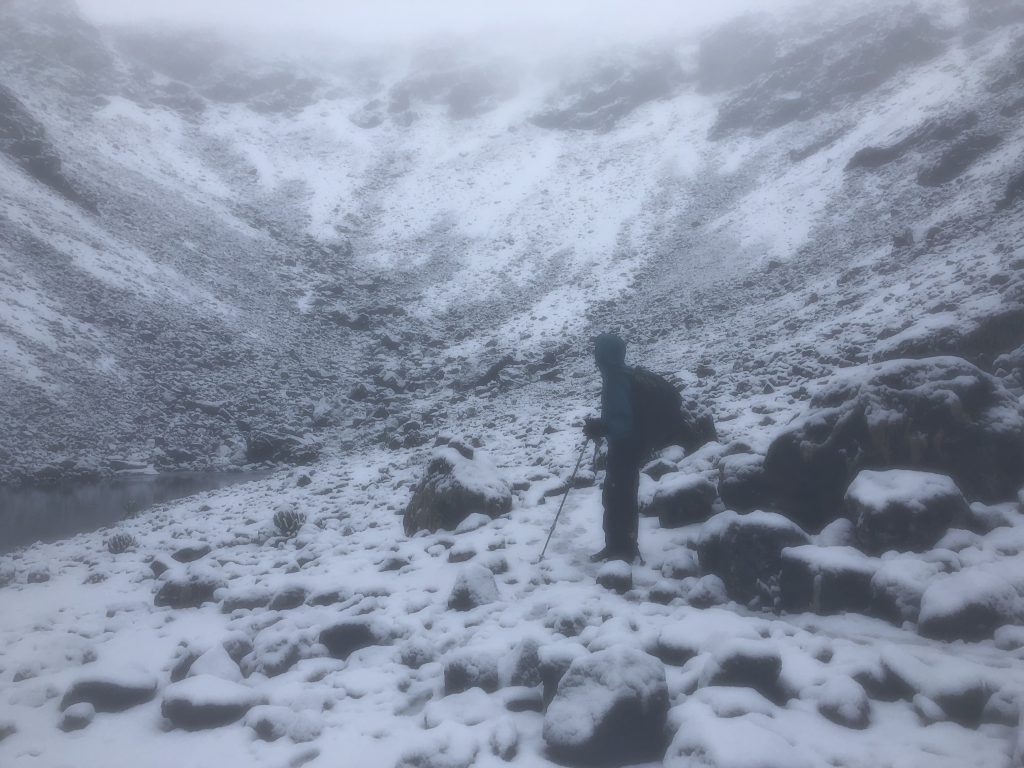
Suddenly I was left with two choices: bare hands in the snow that kept falling, or slipping my soaked gloves back on. Neither was really an option. The final push to Point Lenana would have meant gripping wire cables and edging along slick ledges. With my fingers numb and my gloves soaked through, I knew I wouldn’t be able to hold on.
It was a harsh reminder of how much the right equipment matters. Maybe those gloves would’ve been fine for a snow day in North Carolina, but they had no place on Mount Kenya in the middle of a storm.
So the choice was made. Instead of pressing toward the peak, Louie and I turned down the far side of the mountain, beginning the long descent toward Shipton Camp. Leslie and Paul continued upward into the snow, while we worked our way down through the rocks and scree.
The snow had covered everything — every stone, every slope — which made the footing all the more treacherous. The trails weren’t marked, and our guide just seemed to know the way by instinct. I remember thinking that if anything had happened to him, we wouldn’t have known where to go. Out there, you’re reminded that this is the real thing — remote and raw.
Shipton Camp, named for British explorer Eric Shipton, sits at about 4,200 meters and serves as a base for hikers. It has a few very basic bunk rooms and a large kitchen where different teams had their cooks preparing meals side by side. By the time we arrived, Louie and I were soaked and freezing.
I couldn’t shake the chill, rubbing my hands together uselessly, until a couple of the porters ushered me into the kitchen and told me to warm my fingers over a Bunsen burner they’d lit for cooking.
Slowly, the feeling came back in my fingers, and for the first time in hours, I felt a bit of relief. Sadly, there was a huge stone fireplace in the communal dining area that wasn’t working — probably hadn’t in a long time — and with no other heat source, the place was absolutely freezing.
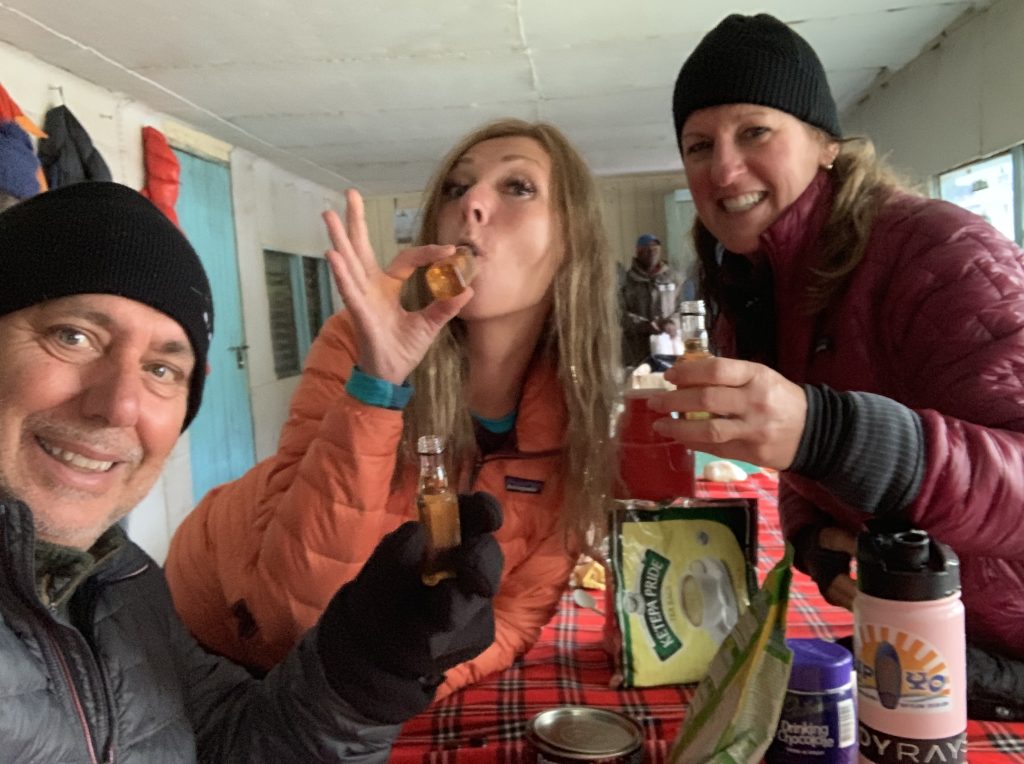
A few hours later, Leslie arrived with Paul, successful from her summit. Louie and I were so proud of her, and we loved celebrating her accomplishment. She had tucked a couple of mini bottles of Fireball into her pack, and we toasted to her climb — probably one of the most unlikely summit celebrations at 4,200 meters. Then it was time for breakfast, which tasted better than it had all week simply because we were warm, dry, and together again.
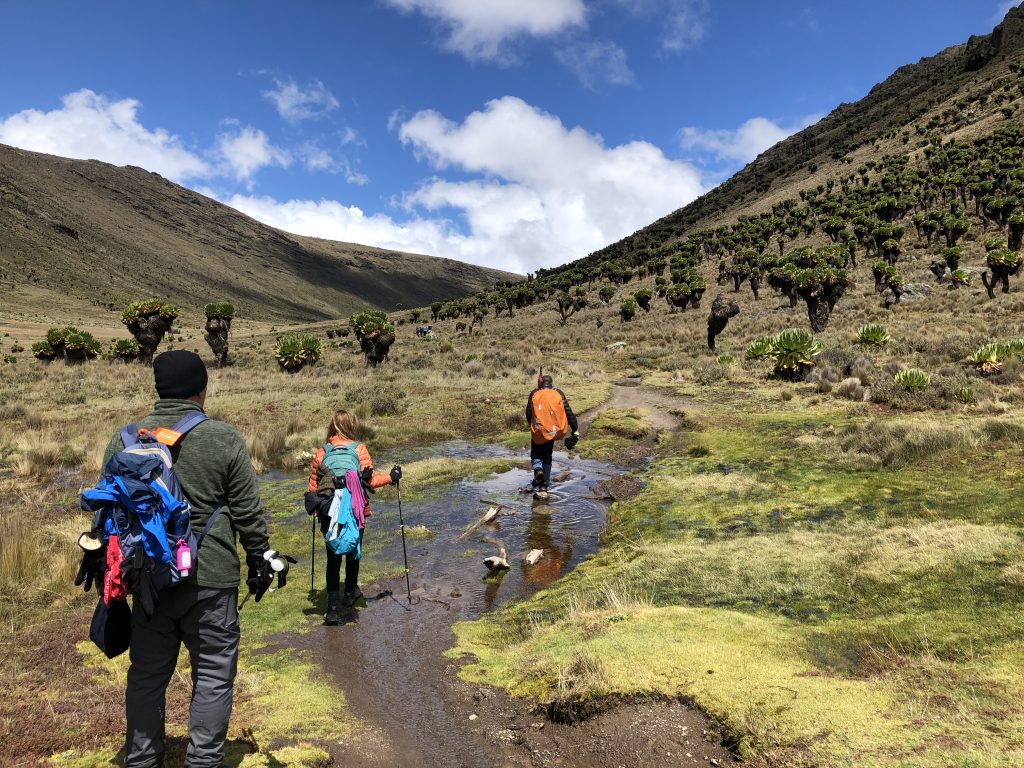
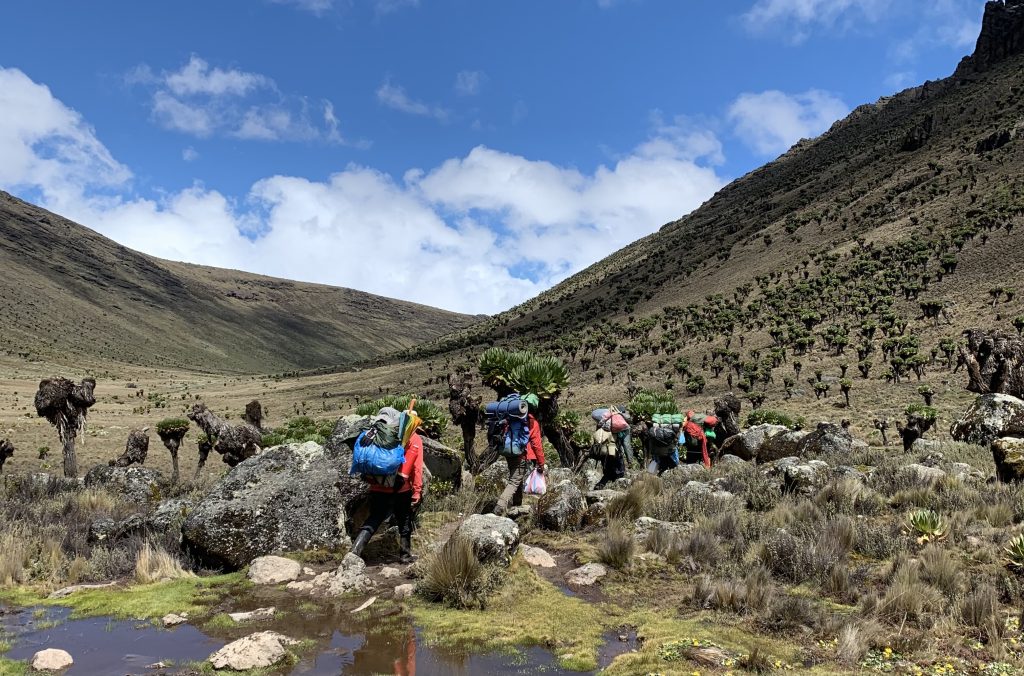
After that, we set off down through Mackinder’s Valley toward Old Moses Camp.
The trail wound steadily downward, the jagged peaks fading behind us as we crossed endless moorland lined with giant lobelias and groundsels. The weather shifted dramatically on the way, from snow and sleet to bright sun and surprising warmth.
Old Moses had wooden cabins with dorm-style bunk beds, a dining hall, and indoor toilets —downright luxurious after several days of camping. But we weren’t staying in the dorms. We pitched our tents outside, gratefully used the facilities, and finally treated ourselves to an ice-cold beer. It felt like a well-earned reward after one of the most challenging days of the Mount Kenya trek.
I woke up at Old Moses Camp with swollen eyes and lips — probably a reaction to the wild swings in weather the day before. My lips felt like they were four times their normal size (in reality, they were probably just double), and my eyelids were so puffy that they were as if they were holding pockets of water.
It was one of those times I was glad to have sunglasses and a hat with me — I felt, and probably looked, like a freak.
After breakfast, we began the final descent, following a wide dirt road that wound through moorland and into bamboo and forest as the air grew warmer and damper.
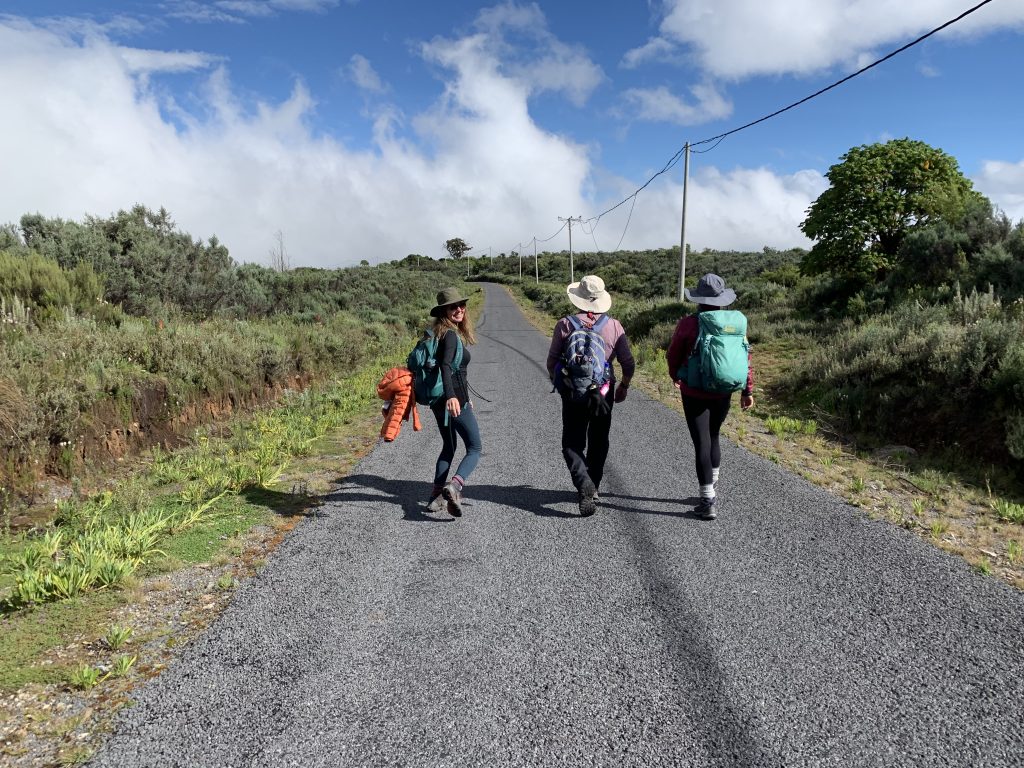
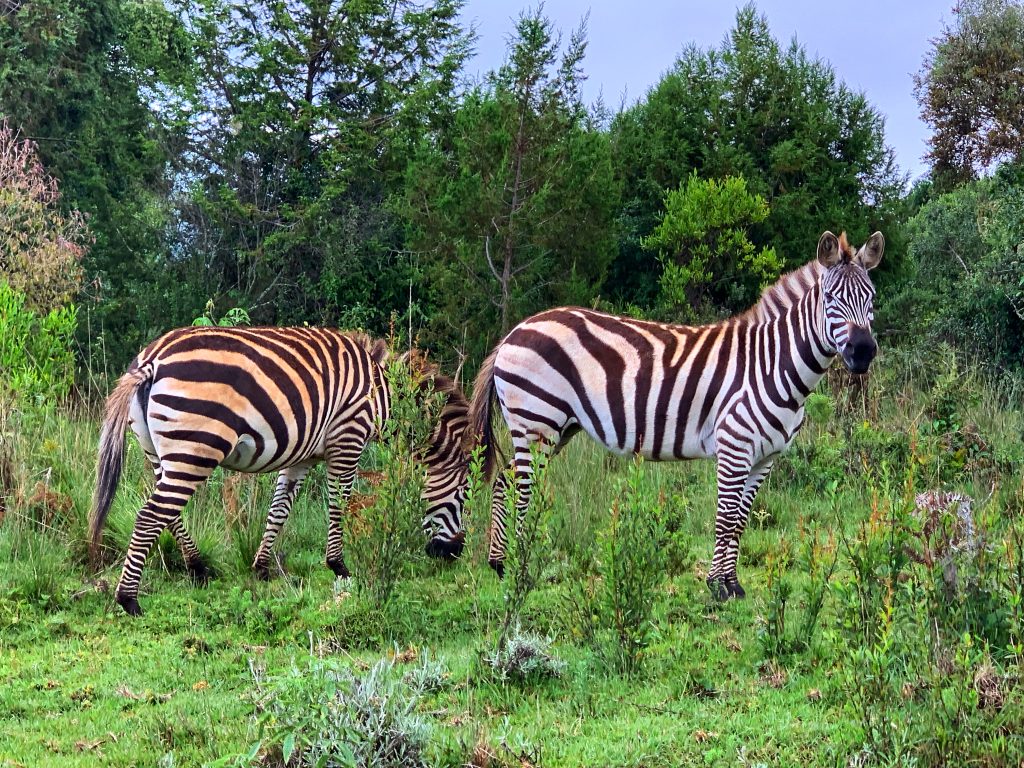
A few hours later we reached the Sirimon Gate, where our trek officially ended. On the way down we spotted zebras grazing in the distance — our first wildlife sighting of the trek, and it felt like the mountain was sending us off with a small gift. From the gate, we piled into a vehicle for the long ride back to Nairobi, arriving by late afternoon, tired but buzzing with everything we’d just experienced.
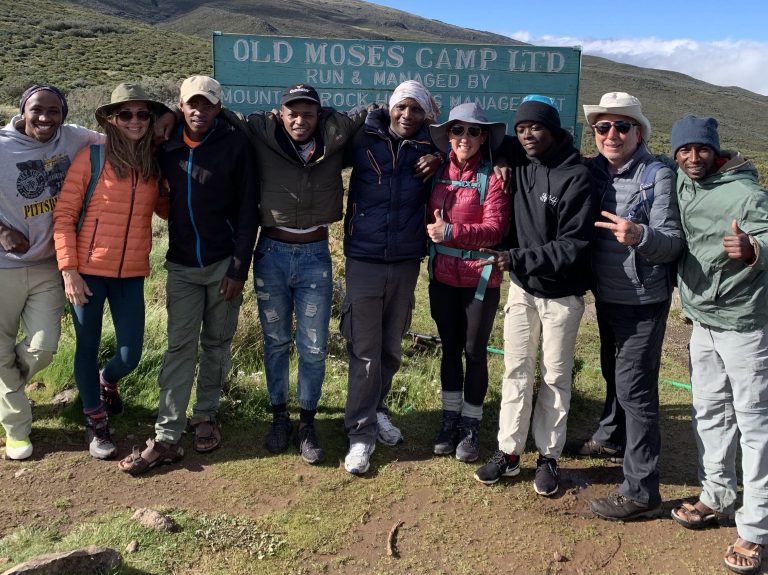
Despite the challenges, this Mount Kenya hiking adventure was truly the journey of a lifetime. I’m proud that I pushed myself as far as I did, and equally proud of knowing when to stop, even when the summit was so close. Hiking Mount Kenya was wild, beautiful, and unforgettable—an experience that reminded me why I seek out trails like this, even when they push me to my limits.
I didn’t make it to the summit this time, but I still came away with plenty of lessons that might help if you’re planning your own Mount Kenya trek.
Best Route: We took the Chogoria–Sirimon Route, which combines dramatic scenery on the ascent with an easier descent. It’s a great choice if you want variety and fewer crowds than Kilimanjaro.
Guides and Porters: A licensed guide is required, and porters and cooks make the trek not only possible but enjoyable. Our porters carried the heavy gear, set up camp, and even surprised us with popcorn after a long day.
Gear and Layers: Temperatures swing wildly. One night we had heavy snow; the next afternoon, blazing sun. Pack warm layers, waterproof gloves, a good sleeping bag, and rain gear.
Altitude: Mintos Camp sits at 4,200 meters, and Point Lenana is at 4,985 meters. Go poley poley (slowly) and hydrate constantly (maje maje). Even strong hikers can feel the altitude.
Facilities: Don’t expect luxury. Flush toilets and cold showers are rare treats, while most nights are in tents with outhouses. Old Moses Camp and Shipton Camp have simple cabins and communal dining halls.
Wildlife and Scenery: Keep an eye out for zebras and other wildlife on the lower slopes, and enjoy the surreal alpine plants and dramatic cliffs higher up.
Mount Kenya isn’t just a side trip from Tanzania — it’s its own wild, beautiful challenge. Go poley poley, drink your maje maje, and be ready for an adventure you’ll never forget.
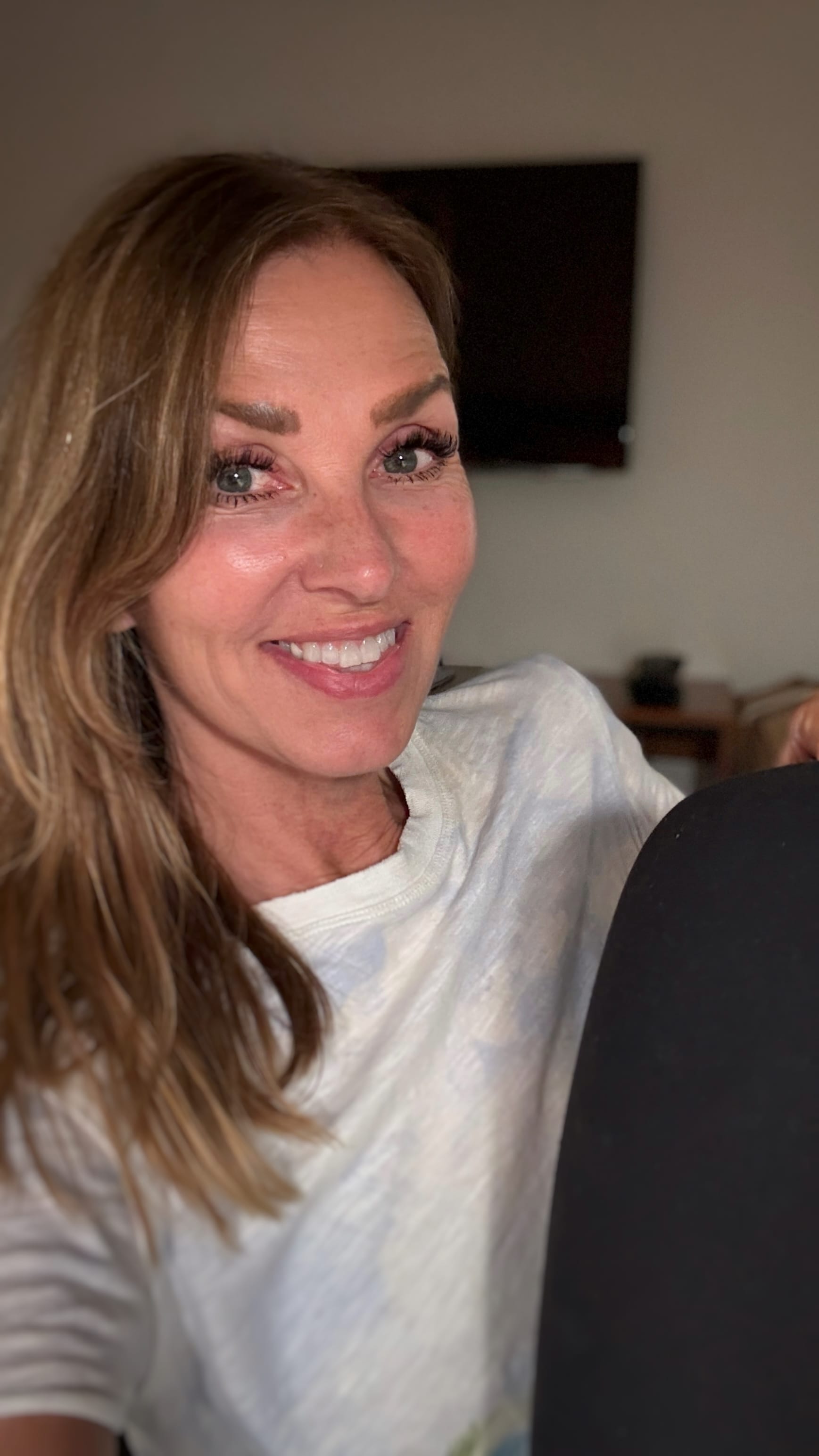
Hi, I’m JoAnne—writer, wanderer, and lover of places that surprise me. I’ve traveled to 60+ countries (and counting), usually with a camera in one hand and a notebook in the other. I’m drawn to mosaics, markets, and mountains, and I write to remember what moved me. When I’m not traveling, I’m working on my blog Travels Afoot, trying new creative projects, or planning my next adventure.